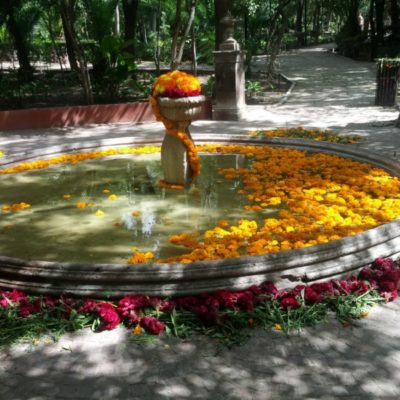
8 Things You Need to Know about Visas
March 28, 2014 | Nomad Life, Travel Logistics
A visa is basically a permit to visit another country. If you want to spend time abroad, even just for a short vacation, you need to know about visas (or, more generally, the requirements to enter a country; not all countries require visas of all visitors).
A country’s visa requirements determine how much you need to plan ahead before you visit, what kind of information you need to provide, how long you can stay, and more.
It can also shape your decisions about where to go and, if you’re visiting more than one country, in what order.
I’m not an immigration lawyer or any kind of certified expert on the topic, so please do your research!
But I’ve learned a lot over the years, and these are the top things I think you need to know about visas, along with some explanations and examples from my own experience.
1. Every country has different entry requirements for visitors, and they vary depending on a visitor’s nationality.
In the last year, we have visited the U.S., Canada, Malaysia, Singapore, Indonesia, India, and Thailand. Roberto’s passport is from Argentina and mine is from the United States; the entry requirements were the same for both of us in Malaysia, Singapore, and Indonesia, but different in the U.S., Canada, India, and Thailand.
Obviously, I don’t need a visa to go to the United States, nor Canada, but Roberto was required to apply in advance for a visa to each country (luckily the tourist visa for Argentines is good for 10 years, so he doesn’t have to apply again for each subsequent trip). For India, we both had to apply for visas in advance, but Roberto’s application fee was about a tenth of what I had to pay; for Thailand, I was granted 30 days on arrival, and he got 90 days.
If you’re American, the best place to start researching this is the U.S. State Department’s website (select your destination country then Entry, Exit, or Visa Requirements) or the website for the embassy of your destination country located in your country (for example, the Indian embassy in the United States). Other countries may have their own resources for their citizens, or you can try the IATA’s TravelCentre.
2. Some countries will not allow you to enter (or even apply for a visa) if your passport expires within the next six months.
To be on the safe side, it’s best to think of your passport as expiring six months before the stated expiration date, because in many cases you won’t be able to use it during those last six months. It’s probably a good idea to apply for a new passport seven to nine months before yours expires, because passport renewals can take at least a few weeks (unless you pay a rush fee).
If you will be traveling for an extended period, keep an eye on this, because your passport might reach that six-month mark while you’re on the road. I was able to easily renew my passport at the U.S. embassy in Buenos Aires, Argentina, but I’m not sure that service is available at all locations.
Read more about this here (U.S. perspective) and here (Australian perspective). And, here’s a rough guide of the countries/regions that follow this rule. As it notes in one of those articles, some countries even require that you have a certain number of blank pages in your passport when you arrive or apply for a visa. I had extra pages added to my passport at the U.S. embassy in Bangkok in 2005 when I noticed I was running out of space. Or, if you travel a lot (or plan to), you may be able to request a passport with double the pages when you renew yours (the friendly agent at the U.S. embassy in Buenos Aires offered to do this for me without my even asking!).
3. Some countries require visitors to apply for a visa in advance.
Others will stamp your passport on arrival to allow you to stay for a certain number of days, without applying for a visa in advance.
Find out about entry requirements as soon as you know what country or countries you want to visit, because it takes time to apply for a visa, and you often need to surrender your passport in order for them to issue the visa (which means you can’t apply for visas to multiple countries simultaneously).
Sometimes, you can apply for a visa to another country while you’re located somewhere besides the country where your passport was issued, but not always. I have obtained a visa to India while in Indonesia and a visa to Vietnam while in Thailand, but was not able to obtain a visa to India while in Malaysia.
4. Some countries allow you to easily renew a tourist visa so you can extend your stay, while others make it more difficult.
In some countries, it’s possible to renew a tourist visa (at least once) while you’re still in the country; other countries require you to leave and come back to get a new stamp. Some countries grant you a shorter stay if you arrive by land or sea than they do if you arrive by air.
If you want to stay in a country for an extended period and you know a quick trip to another country will allow you to get a new tourist visa, you might want to base yourself close to a border to make visa runs faster and cheaper.
5. Most digital nomads visit other countries on a tourist visa.
Unfortunately, the world of visas and immigration has not caught up to the digital age, so while some may say we don’t fit the profile of typical tourists, we don’t fit the mold for business or work visas, either.
Although some digital nomads may be doing activities related to their work/business while located in another country, in most cases their location has nothing to do with their work, and they’re not taking jobs away from the local community.
From what I’ve heard and seen, I think most digital nomads and long-term travelers use travel visas (and share as little information as possible about their work), or they might get a student visa or find a way to obtain residency if they want to stick around for a while.
6. Don’t be surprised if you’re asked for visa-related information by the airline when you check in for your flight.
When you’re traveling by air, responsibility falls to the airline to make sure you have the necessary documentation to enter your destination country. However, it’s also possible that the airline agent won’t be aware of all the fine print of a country’s entry requirements, so again, do your research.
I know people who’ve been hassled by the airline for not having proof of onward travel when going to Argentina, but Argentina doesn’t require proof of onward travel (unlike some countries). “Proof of onward travel” is a way to show that you intend to leave the country before your visa expires; this might be a round-trip plane ticket back to where you started the trip, a plane ticket to another destination, or even a bus, train, or ferry ticket to another country. Even countries who do officially require proof of onward travel don’t always ask for it; it’s up to you whether you want to be prepared by having a travel reservation in advance.
7. Do your research and make sure you have up-to-date information for you.
Visa rules often change and are different for every nationality, so you need to find out what applies to your unique situation. Not only that, but the “rules” can vary simply depending on which immigration official (or airline representative) you are dealing with.
Other travelers can be helpful resources, but remember that everyone’s experience is different and you won’t know for sure how things will go until you’re doing it yourself. For example, I had a number of people tell me they had never been asked for proof of onward travel when arriving in Indonesia, but they do officially require it, and we were asked for it (and given a harsh warning for not having it!).
8. Being able to visit another country is a privilege!
Technically, they don’t have to let you in if they don’t want to. Be respectful (and presentable) when applying for visas and going through immigration, and show them that you’re a guest they’d love to have visit their home.
Get the Top 10 Logistical Things You Need to do before becoming a nomad
(That Aren't What You Think)
When you download the guide, you’ll also be subscribed to the Nomadtopia newsletter. Your email is safe with me and you can unsubscribe anytime. View our Privacy Policy.




